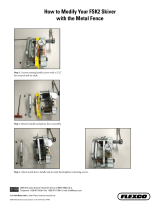6
1. Hold power tools by insulated gripping surfaces when performing
an operation where the cutting tool may contact hidden wiring or its
own cord. Contact with a "live" wire will make exposed metal parts of
the tool "live" and shock the operator.
2. Wait for the cutter to stop before setting the tool down. An exposed
cutter may engage the surface leading to possible loss of control and
serious injury.
3. Use clamps or other practical way to secure and support the
workpiece to a stable platform. Holding the work by hand or against your
body is unstable and may lead to loss of control.
4. Keep blades sharp. Sharp blades will do the job better and safer.
5. When you have finished a cut be careful not to come into contact with the
blade. Turn off the motor immediately.
6. Never hold work in your hand, lap, or against other parts of your body.
7. Keep guards in working order. Check operation before each use. Do not
use if guard does not close briskly over blade.
If tool is dropped, guard may distort restricting operation.
Keep slide mechanism free of wood chips. Occasionally lubricate with light
tool oil. DO NOT OVER LUBRICATE as this creates excessive sawdust
buildup.
8. Keep hands away from cutting area. Keep hands away
from blade. Do not reach underneath work while blade is rotating.
9. Avoid cutting nails and knots. Inspect for and remove all nails from
lumber before cutting. Try to layout cuts between knots.
10. Wear eye and hearing protection. Always use safety glasses. Everyday
eyeglasses are NOT safety glasses. USE CERTIFIED SAFETY EQUIPMENT.
Eye protection equipment should comply with ANSI Z87.1 standards.
Hearing equipment should comply with ANSI S3.19 standards.
11. Use of this tool can generate and disburse dust or other
airborne particles, including wood dust, crystalline silica dust and
asbestos dust. Direct particles away from face and body. Always operate
tool in well ventilated area and provide for proper dust removal. Use dust
collection system wherever possible. Exposure to the dust may cause
serious and permanent respiratory or other injury, including silicosis (a
serious lung disease), cancer, and death. Avoid breathing the dust, and
avoid prolonged contact with dust. Allowing dust to get into your mouth or
eyes, or lay on your skin may promote absorption of harmful material.
Always use properly fitting NIOSH/OSHA approved respiratory protection
appropriate for the dust exposure, and wash exposed areas with soap and
water.
ADDITIONAL SPECIFIC SAFETY RULES
SAVE THESE INSTRUCTIONS!




















